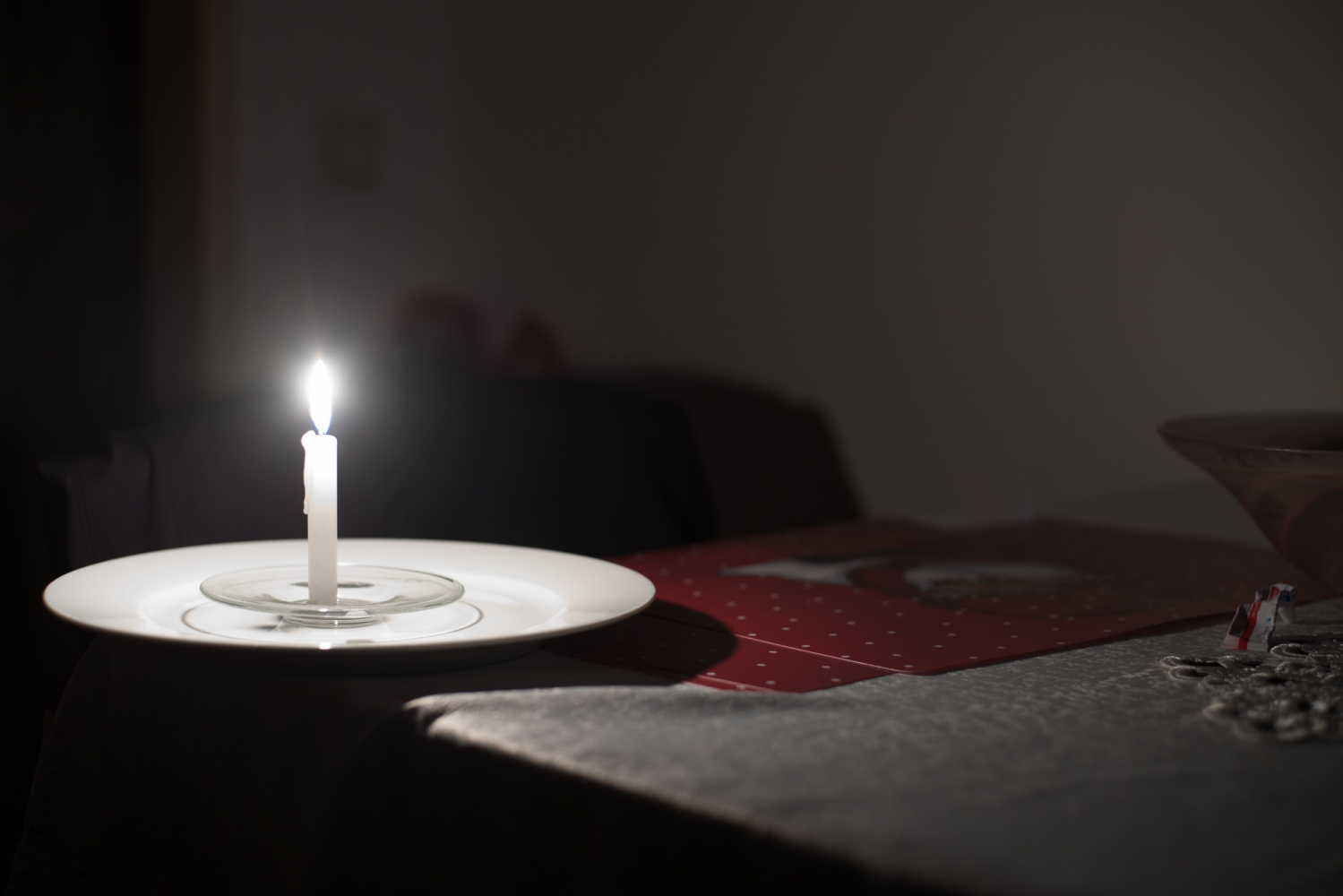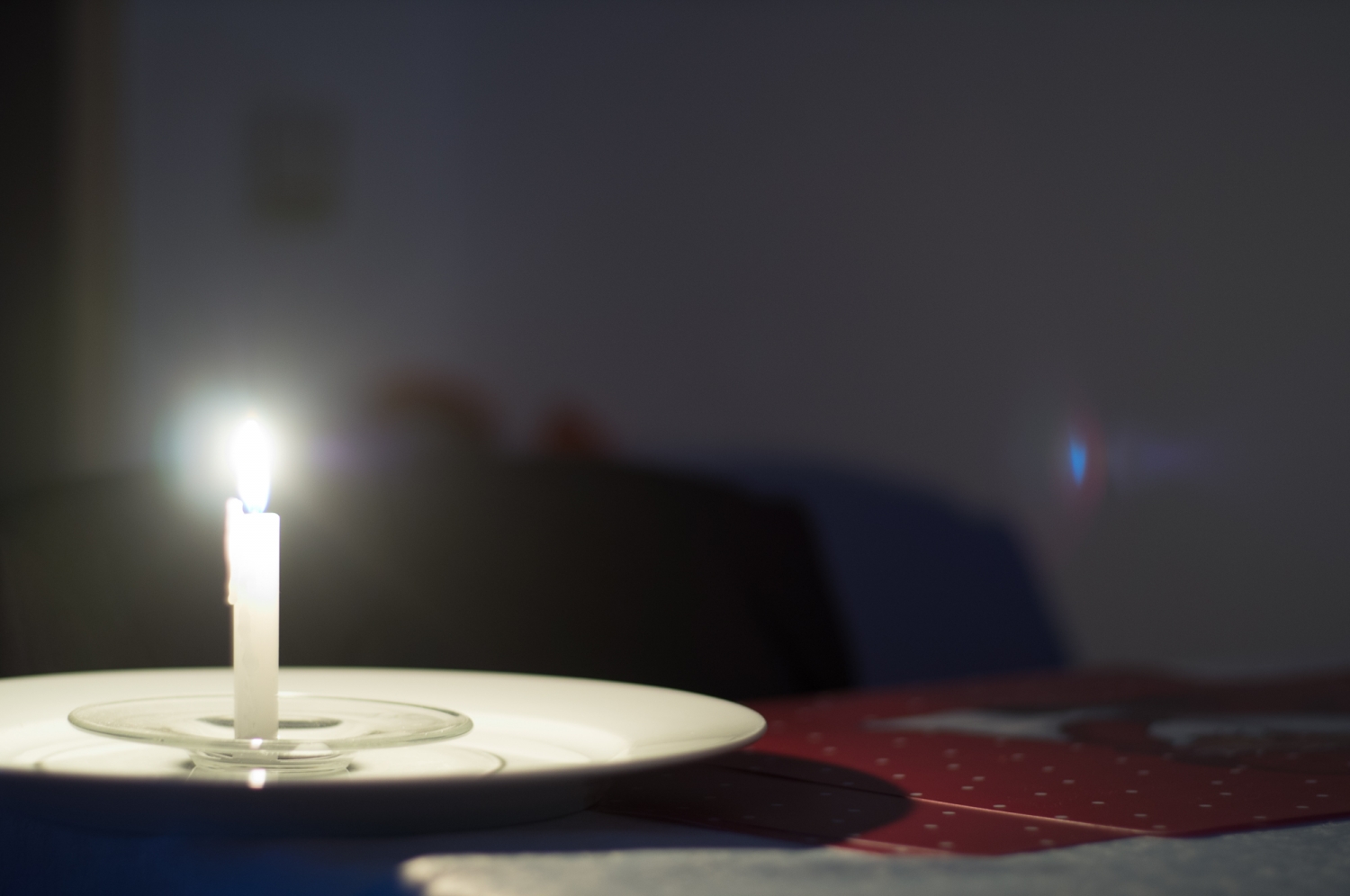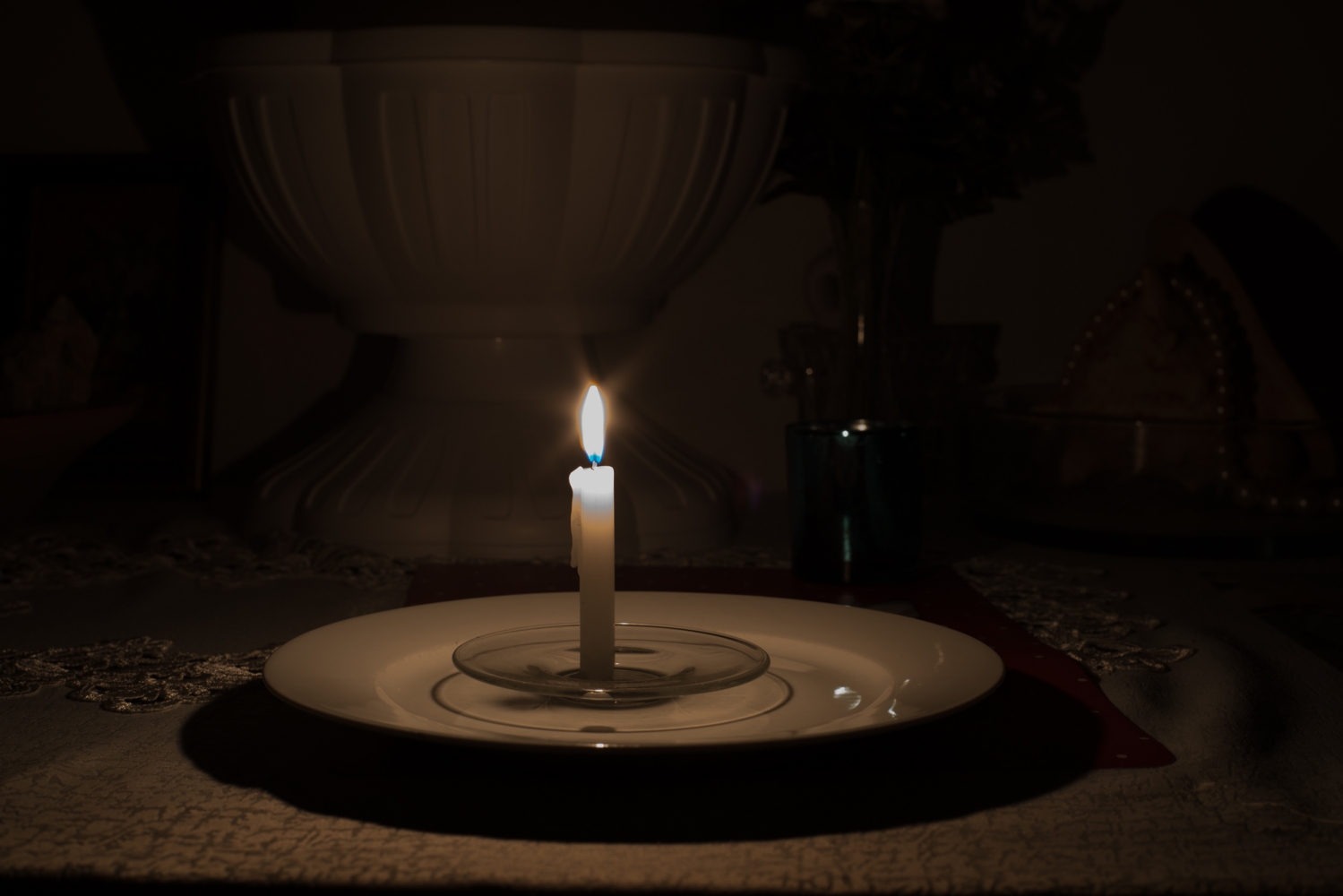| View previous topic :: View next topic |
| Author |
Message |
alex ph

Joined: 16 Mar 2013
Posts: 1571
|
 Posted: Sat Feb 16, 2019 11:22 pm Post subject: Flare test of several 28mm and 50mm lenses Posted: Sat Feb 16, 2019 11:22 pm Post subject: Flare test of several 28mm and 50mm lenses |
 |
|
alex ph wrote:
A part of the lens quality and character is the way it flares. Pleasantly in some occasions, rather annoying in some others.
A good way that I discovered to check the lens flare is not a sun-on-the-edge situation, but a source of artificial light in the dark. That shows nothing else but flare and thus helps to catch separately this parameter of each lens, without beauty additives.
So, here is an unscientific but rather practical test of several lenses which shows how the handle the stray light. The camera used Sony Nex-5N. The shots are taken in different periods and acumulated progressively, before being put on the same plane.
The upper line are mostly 28mms: Konica Hexanon 3.5/28 (older 7/7 version), Minolta MD 3.5/28, Olympus Zuiko 3.5/28, plus Minolta MD Zoom 3.5/35-70 (at she wide end). All the lenses are set at f5.6, except the first which is close to f4, if I did not mix my notes.
The lower line are 50mms: Konica Hexanon 1.4/50, Rollei Planar 1.8/50 (older all-metal Singapore verson), Asahi SMC Takumar 1.4/50 and Carl Zeiss Jena Tessar 2.8/50 (late version). Not all of them are at the same aperture, while all are set to the next value after the w/o. The Hexanon and Rollei Planar seem to be set at f2.8. Takumar is at f2, and Tessar is at f4.

Click on the image to see it in a larger size.
Some conclusions:
I already knew the bad flare resistance of the otherwise excellent Rollei Planar. That was my initial pulsion for the whole series. What is quite revealing is Takumar's rather bad ghost spot. And what is surprising is a rather good flare control by CZJ Tessar.
On the 28mms side Minolta seems to have the best flare control. And the Hexanon adds only modest ghosting spots which do not look even close as bad as Zuiko or the otherwise wonderful Minolta Zoom.
So, as you understand, this is not a post on lens overall quality. It just lets you better choose the lens for particular light conditions.
Please feel free to add test shots from other lenses, in the day or night situations. |
|
| Back to top |
|
 |
tb_a


Joined: 26 Jan 2010
Posts: 3678
Location: Austria
Expire: 2019-08-28
|
 Posted: Sat Feb 16, 2019 11:51 pm Post subject: Posted: Sat Feb 16, 2019 11:51 pm Post subject: |
 |
|
tb_a wrote:
Just a little observation: From my personal experience a lens may deliver totally different results when used on different cameras or different adapters.
I've recently compared my 7artisans 50/1.1 when shooting a candle light in the dark and it produced wide open strange flare on the Sony A7R II and no flare at all on the Ricoh GXR-M.
_________________
Thomas Bernardy
Manual focus lenses mainly from Minolta, Pentax, Voigtlaender, Leitz, Topcon and from Russia (too many to be listed here). |
|
| Back to top |
|
 |
kiddo

Joined: 29 Jun 2018
Posts: 1120
|
 Posted: Sun Feb 17, 2019 9:12 am Post subject: Posted: Sun Feb 17, 2019 9:12 am Post subject: |
 |
|
kiddo wrote:
I've been using the MC rokkor 55 1.7 pf on a night with my daughter , artificial light in the park and flares are very low and very much easy controlled. Of course, that happened on m4/3 sensor, on Sony FF flares a lot more ,all this for a lens that's got very poor coatings.. Most of the times , don't use a hood, as I don't have for all the lenses (a generic one would be better that nothing,but.... I'm a lazy but) ,but the hood is very important also. Besides this, there are nice and beautiful,artistic flares ,and also very bad looking bothering ones. Each lens is a world, important thing is get to know it and control it's positive and negative part of them. The comparation at different aperture on 2 lenses is not fare, but your test is interesting because it shows things (bad flares) that most of us are not happy to see in a nice shot. |
|
| Back to top |
|
 |
alex ph

Joined: 16 Mar 2013
Posts: 1571
|
 Posted: Sun Feb 17, 2019 7:45 pm Post subject: Posted: Sun Feb 17, 2019 7:45 pm Post subject: |
 |
|
alex ph wrote:
Thank you, Thomas and Kiddo, for your important correcting comments. It's true that I thought naturally about lenses and not on sensors, having only Sony mirrorless in my hands.
Will flare (almost) disappear on Ricoh or MFT cameras even in the case of Rollei Planar? I'd be glad to see an example. |
|
| Back to top |
|
 |
tb_a


Joined: 26 Jan 2010
Posts: 3678
Location: Austria
Expire: 2019-08-28
|
 Posted: Sun Feb 17, 2019 9:30 pm Post subject: Posted: Sun Feb 17, 2019 9:30 pm Post subject: |
 |
|
tb_a wrote:
| alex ph wrote: |
Thank you, Thomas and Kiddo, for your important correcting comments. It's true that I thought naturally about lenses and not on sensors, having only Sony mirrorless in my hands.
Will flare (almost) disappear on Ricoh or MFT cameras even in the case of Rollei Planar? I'd be glad to see an example. |
You made me curios as well. Will do a comparison with the Rollei Planar (AKA Voigtländer Ultron) on different cameras tomorrow and report back.
_________________
Thomas Bernardy
Manual focus lenses mainly from Minolta, Pentax, Voigtlaender, Leitz, Topcon and from Russia (too many to be listed here). |
|
| Back to top |
|
 |
luisalegria


Joined: 07 Mar 2008
Posts: 6627
Location: San Francisco, USA
Expire: 2018-01-18
|
 Posted: Sun Feb 17, 2019 10:08 pm Post subject: Posted: Sun Feb 17, 2019 10:08 pm Post subject: |
 |
|
luisalegria wrote:
Interesting test.
The Tessar is a simpler formula, 4 not six or seven elements like the others. I think back and don’t recall anything like these artifacts from Tessars or triplets.
In my experience the worse sort of flare is that from haze, degrading the whole image. But these artifacts would certainly make problems in any indoor shoot with bright point source lights. It’s easy to replicate and you are right, it should be checked before shooting in such conditions.
_________________
I like Pentax DSLR's, Exaktas, M42 bodies of all kinds, strange and cheap Japanese lenses, and am dabbling in medium format/Speed Graphic work. |
|
| Back to top |
|
 |
tb_a


Joined: 26 Jan 2010
Posts: 3678
Location: Austria
Expire: 2019-08-28
|
 Posted: Mon Feb 18, 2019 7:21 pm Post subject: Posted: Mon Feb 18, 2019 7:21 pm Post subject: |
 |
|
tb_a wrote:
Alex, I really had hard times to reproduce this strange flare. Only if the light source is on the side and only fully open at F1.8 the Rollei Planar/Voigtlaender Ultron 50/1.8 produces this circle as shown on your example on the A7R II as well:

Stopped down to F2.8 the circle is gone and only a very little blueish spot is left on the right side:

On my Ricoh GXR-M under same conditions there is no circle at F1.8 but the blue spot is much more visible:

Once the light is in the middle and/or stopped down to F5.6 there is no visible flare with the A7R II:

Same is true for the Ricoh GXR-M.
Once more it shows that the used camera or maybe also the adapter might influence the result.
Cheers,
_________________
Thomas Bernardy
Manual focus lenses mainly from Minolta, Pentax, Voigtlaender, Leitz, Topcon and from Russia (too many to be listed here). |
|
| Back to top |
|
 |
luisalegria


Joined: 07 Mar 2008
Posts: 6627
Location: San Francisco, USA
Expire: 2018-01-18
|
 Posted: Mon Feb 18, 2019 8:32 pm Post subject: Posted: Mon Feb 18, 2019 8:32 pm Post subject: |
 |
|
luisalegria wrote:
A candle isn't quite a strong point source. Its a fairly large and somewhat diffuse light at close range.
I would do as Alex did, and use a powerful streetlight.
This is not a very common problem in my experience, and I have used the 50/1.4 Takumar a lot, and I don't recall seeing it on any photo I checked closely, but I agree it can happen.
_________________
I like Pentax DSLR's, Exaktas, M42 bodies of all kinds, strange and cheap Japanese lenses, and am dabbling in medium format/Speed Graphic work. |
|
| Back to top |
|
 |
tb_a


Joined: 26 Jan 2010
Posts: 3678
Location: Austria
Expire: 2019-08-28
|
 Posted: Mon Feb 18, 2019 9:05 pm Post subject: Posted: Mon Feb 18, 2019 9:05 pm Post subject: |
 |
|
tb_a wrote:
| luisalegria wrote: |
A candle isn't quite a strong point source. Its a fairly large and somewhat diffuse light at close range.
I would do as Alex did, and use a powerful streetlight. |
Well, but it produced the flare anyway, maybe it's even stronger with a stronger light source. But it's rather cold outside hence I preferred to do it indoors.
The mission was to check whether there is any difference on different cameras. I think that's obvious, at least fully open.
_________________
Thomas Bernardy
Manual focus lenses mainly from Minolta, Pentax, Voigtlaender, Leitz, Topcon and from Russia (too many to be listed here). |
|
| Back to top |
|
 |
alex ph

Joined: 16 Mar 2013
Posts: 1571
|
 Posted: Sat Feb 23, 2019 11:14 pm Post subject: Posted: Sat Feb 23, 2019 11:14 pm Post subject: |
 |
|
alex ph wrote:
Thank you, Thomas, for your instructive test! Next time I will take into account the sensor effect. Even if the Rollei Planar gives a flare, of a different kind, also on your Ricoh.
I agree with Luis, the halo intensity should depend on the intensity of the light. Halogen bulbs in those street lamps must be quite powerful adding more "useless" light straying inside the lens.
As for the lens itself, I tried three copies of Rollei Planar, and all of theme were equally prone to that extensive flare on Nex. And with a cheap UV-filter on, the halo becomes even more pronounced. |
|
| Back to top |
|
 |
tb_a


Joined: 26 Jan 2010
Posts: 3678
Location: Austria
Expire: 2019-08-28
|
 Posted: Sun Feb 24, 2019 12:10 am Post subject: Posted: Sun Feb 24, 2019 12:10 am Post subject: |
 |
|
tb_a wrote:
| alex ph wrote: |
Thank you, Thomas, for your instructive test! Next time I will take into account the sensor effect. Even if the Rollei Planar gives a flare, of a different kind, also on your Ricoh.
I agree with Luis, the halo intensity should depend on the intensity of the light. Halogen bulbs in those street lamps must be quite powerful adding more "useless" light straying inside the lens.
As for the lens itself, I tried three copies of Rollei Planar, and all of theme were equally prone to that extensive flare on Nex. And with a cheap UV-filter on, the halo becomes even more pronounced. |
Alex, I've checked our street lights in the meantime but due to the energy saving policies in my hometown they are barely stronger than the candle light which I used for testing. 
For me it was really interesting to find out that the resulting flare strongly depends on the positioning of the light source within the picture frame and the used aperture.
Anyway, I find it much more distracting when a lens produces flare in daylight conditions. In this respect the Rollei Planar isn't bad at all, at least as long a proper lens hood is used.
_________________
Thomas Bernardy
Manual focus lenses mainly from Minolta, Pentax, Voigtlaender, Leitz, Topcon and from Russia (too many to be listed here). |
|
| Back to top |
|
 |
alex ph

Joined: 16 Mar 2013
Posts: 1571
|
 Posted: Sun Feb 24, 2019 11:19 pm Post subject: Posted: Sun Feb 24, 2019 11:19 pm Post subject: |
 |
|
alex ph wrote:
Ha-ha, Thomas, that sounds nice, candle-strong street lights, kind of XIX century! Hope that does not make problem to find the way home in the evenings.
I agree, in the daylight Rollei Planar is a wonderful lens. And even some sun flare (sometimes a strangely green one) does not change that feeling. |
|
| Back to top |
|
 |
visualopsins


Joined: 05 Mar 2009
Posts: 10531
Location: California
Expire: 2025-04-11
|
 Posted: Sat Feb 06, 2021 7:28 pm Post subject: Posted: Sat Feb 06, 2021 7:28 pm Post subject: |
 |
|
visualopsins wrote:
| tb_a wrote: |
Alex, I really had hard times to reproduce this strange flare. Only if the light source is on the side and only fully open at F1.8 the Rollei Planar/Voigtlaender Ultron 50/1.8 produces this circle as shown on your example on the A7R II as well:

|
Not so much flare as light reflecting off shiny surface inside lens -- internal reflections from non-black surface or lens element edge(s).
| tb_a wrote: |
Stopped down to F2.8 the circle is gone and only a very little blueish spot is left on the right side:
pic
On my Ricoh GXR-M under same conditions there is no circle at F1.8 but the blue spot is much more visible:
pic
Once the light is in the middle and/or stopped down to F5.6 there is no visible flare with the A7R II:

|
Why is base of candle teal colored? There's your flare!
| tb_a wrote: |
Same is true for the Ricoh GXR-M.
Once more it shows that the used camera or maybe also the adapter might influence the result.
Cheers, |
| alex ph wrote: |
| Ha-ha, Thomas, that sounds nice, candle-strong street lights, kind of XIX century! Hope that does not make problem to find the way home in the evenings.... |
Brightness decreases as viewing distance increases -- walking under the lights brighter than from a distance...
_________________
☮☮☮☮☮☮☮☮☮☮☮☮☮☮☮☮☮☮☮☮☮☮☮☮☮☮☮☮☮☮☮☮ like attracts like! ☮☮☮☮☮☮☮☮☮☮☮☮☮☮☮☮☮☮☮☮☮☮☮☮☮☮☮☮☮☮☮☮
Cameras: Sony ILCE-7RM2, Spotmatics II, F, and ESII, Nikon P4
Lenses:
M42 Asahi Optical Co., Takumar 1:4 f=35mm, 1:2 f=58mm (Sonnar), 1:2.4 f=58mm (Heliar), 1:2.2 f=55mm (Gaussian), 1:2.8 f=105mm (Model I), 1:2.8/105 (Model II), 1:5.6/200, Tele-Takumar 1:5.6/200, 1:6.3/300, Macro-Takumar 1:4/50, Auto-Takumar 1:2.3 f=35, 1:1.8 f=55mm, 1:2.2 f=55mm, Super-TAKUMAR 1:3.5/28 (fat), 1:2/35 (Fat), 1:1.4/50 (8-element), Super-Multi-Coated Fisheye-TAKUMAR 1:4/17, Super-Multi-Coated TAKUMAR 1:4.5/20, 1:3.5/24, 1:3.5/28, 1:2/35, 1:3.5/35, 1:1.8/85, 1:1.9/85 1:2.8/105, 1:3.5/135, 1:2.5/135 (II), 1:4/150, 1:4/200, 1:4/300, 1:4.5/500, Super-Multi-Coated Macro-TAKUMAR 1:4/50, 1:4/100, Super-Multi-Coated Bellows-TAKUMAR 1:4/100, SMC TAKUMAR 1:1.4/50, 1:1.8/55
M42 Carl Zeiss Jena Flektogon 2.4/35
Contax Carl Zeiss Vario-Sonnar T* 28-70mm F3.5-4.5
Pentax K-mount SMC PENTAX ZOOM 1:3.5 35~105mm, SMC PENTAX ZOOM 1:4 45~125mm
Nikon Micro-NIKKOR-P-C Auto 1:3.5 f=55mm, NIKKOR-P Auto 105mm f/2.5 Pre-AI (Sonnar), Micro-NIKKOR 105mm 1:4 AI, NIKKOR AI-S 35-135mm f/3,5-4,5
Tamron SP 17mm f/3.5 (51B), Tamron SP 17mm f/3.5 (51BB), SP 500mm f/8 (55BB), SP 70-210mm f/3.5 (19AH)
Vivitar 100mm 1:2.8 MC 1:1 Macro Telephoto (Kiron)
|
|
| Back to top |
|
 |
|
|
|
You cannot post new topics in this forum
You cannot reply to topics in this forum
You cannot edit your posts in this forum
You cannot delete your posts in this forum
You cannot vote in polls in this forum
|
